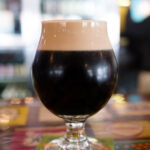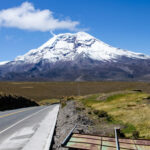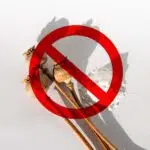History of World Cider Day
By the time the Romans invaded England around 55 BCE, they found that cider was already being enjoyed among the Celts. Apple trees had already been introduced to the landscape from forests around Kazakhstan and were well established across Europe and Asia. It was in southern England, France, and Spain that the process of fermenting (and later distilling) the fruit was perfected.
In America, John Chapman ( who we all know better as Johnny Appleseed) established apple nurseries along the edge of the frontier in the early 19th century. Since he was heavily against grafting apple trees — a popular process in Europe consisting of joining together tissues of a plant in order to reproduce genetically identical fruit — the cider made at the time were from apples specifically unique to America.
Though in most countries, cider is automatically considered a boozy drink made from Apples, in the United States there is a distinction between cider and hard cider. That’s because in most cases when Americans say “cider” what they actually mean is unfiltered apple juice, with “hard cider” referring to the drink the rest of the world recognizes as the alcoholic concoction.
Cider has a low alcohol content because apples are low in sugar. Even the sweetest of apples contains far less sugar than grapes. In vats of cider, the yeast eats whatever sugar is available, turning it into alcohol and carbon dioxide. Once all the sugar is gone, the yeast dies off, leaving behind a fermented cider which only contains around 4% to 5% alcohol. Today, some cider makers add another round of sugar and yeast to their concoction, allowing the carbon dioxide to build up and create bubbles inside the bottle.
World Cider Day timeline
The Romans invaded England and discovered the local Celts were making cider from nearby crabapples too bitter to eat.
Men, women, and children each drank about 40 gallons of cider annually since water at the time was unsafe to drink and contained deadly bacteria and parasites.
John Chapman, aka Johnny Appleseed, introduced apple trees to large parts of Pennsylvania, Ontario, Ohio, Indiana, Illinois, and West Virginia.
In Poland, people drank around 2 million liters of cider, which added up to about 1% of the countries annual alcohol sales.
World Cider Day FAQs
Why is it called cider?
Is there alcohol in apple cider?
Who invented cider?
World Cider Day Activities
Have a date night at a cider brewery
Most local cider breweries are open to the public and make for a great date night! Bring your significant other and try out the many different flavors of cider available, as well as some brewery exclusives!
Host a cider party
Invite your friends over and have them each bring their favorite pack of cider. Share with the group what makes each of these ciders so delicious while loading up on fermented apple goodness.
Make your own!
If you got the apples, you can make the cider! Plus, there are so many recipes online to choose from! Use your favorite apples to create a homemade dry or sweet cider made by you, for you.
Why We Love World Cider Day
It's delicious
Whether you like it dry or sweet, or warm with a hint of cinnamon in the wintertime, there's a cider out there that will appeal to your unique taste buds. Try different flavors such as blood orange, cider rosé, or even maple to expand your pallet and find your new favorite cider.
It's been around for years
When the Romans invaded England around 55 BCE, the local Celts had already perfected the fermented drink and were enjoying it amongst themselves. Even though the way cider is made and the variety available has evolved, the concept of cider has stayed the same and remains a popular drink!
It reminds us of home
There's just something about the familiar taste of cider that transports us back to that feeling of warmth and comfort...maybe it's the apples! We've all grown up on the sweet taste of apple juice, and transferring that childhood drink into an adult beverage only makes the warm feeling last even longer.
World Cider Day dates
| Year | Date | Day |
|---|---|---|
| 2026 | June 3 | Wednesday |
| 2027 | June 3 | Thursday |
| 2028 | June 3 | Saturday |
| 2029 | June 3 | Sunday |
| 2030 | June 3 | Monday |


















